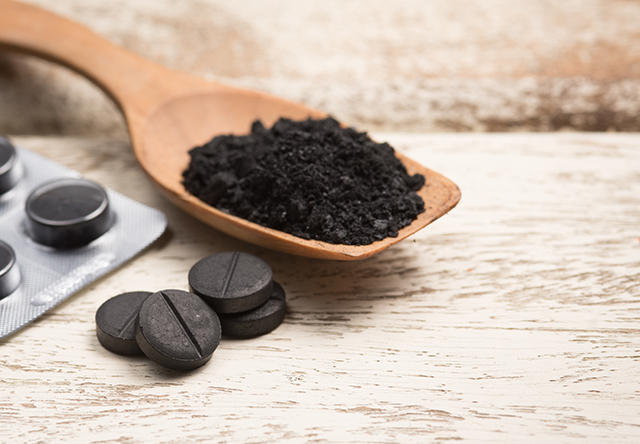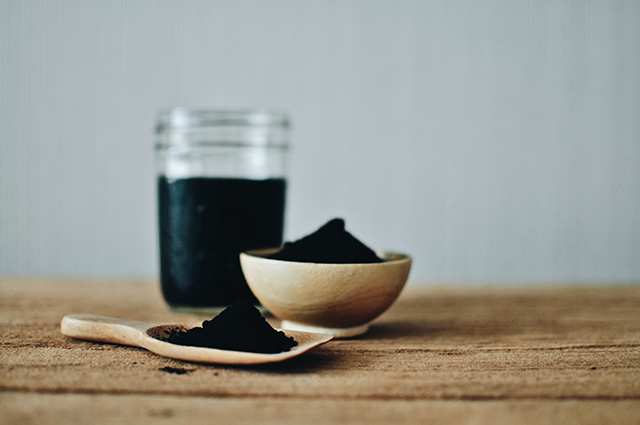
Activated charcoal is a common home remedy with many uses, from detoxifying to boosting kidney health.
You can stock up on activated charcoal as a prepper by learning how to make it at home. This ensures that you have access to a versatile home remedy for minor health complaints like digestive or skin issues when SHTF. (h/t to ThePreppingGuide.com)
Activated charcoal: A versatile home remedy
Activated charcoal is a fine black powder made from ingredients like coal, coconut shells, olive pits, peat, petroleum coke, or sawdust.
The charcoal is activated by processing it at very high temperatures, which change its internal structure, reduces the size of its pores and increases its surface area. This produces charcoal that is more porous than regular charcoal.
Activated charcoal is highly absorbent, allowing it to bind to molecules, ions, or atoms. The "activation" process removes previously absorbed molecules and frees up binding sites. The process also helps reduce the size of the pores in charcoal.
How to make activated charcoal at home
You can make activated charcoal at home by burning wood or fibrous plant material.
Making the charcoal
- Build a medium-sized fire outdoors. The fire must be hot enough to burn wood. Start the fire carefully and keep a fire extinguisher nearby.
- Place the hardwood pieces or plant material into metal pots with a vent hole on top and cover them with a lid. If you don't have hardwood, use alternatives like dense, fibrous plant material (e.g. coconut shells). Airflow to the inside of the pot should be kept low during this process.
- Let the materials burn in the pot for three to five hours. Steam and gas will escape from the vent hole in the lid during this step and everything inside the pot will burn except the carbon (charcoal). You're done once no gas or smoke comes out of the pot.
- The charcoal in the pot will burn hot for a while. Set it aside to let it cool down completely. Once the charcoal has cooled down, transfer the carbon to a clean container. Rinse it with cool water to remove the remaining debris and ash. Drain the water.
- Transfer the rinsed charcoal to a mortar and pestle then grind it into a fine powder. Alternatively, you can place the carbon in a plastic bag and crush it into a powder using a hammer or meat tenderizing mallet.
- Let the charcoal powder air dry completely. Leave it in the mortar for 24 hours. If you used a plastic bag, place the powder in a clean bowl. The powder must be completely dry before moving on to the next part.
Activating the charcoal
- Mix calcium chloride and water using a 1:3 ratio. Prepare enough of the solution to cover the charcoal completely. Do not overheat the solution. For small batches of charcoal, you'll need 100 g (3.5 oz) of chloride mixed with 1.3 cups (310 ml) of water. You can buy calcium chloride from hardware stores, home centers, or general retailers.
- If you don't have calcium chloride solution, use bleach or lemon juice instead. Replace the calcium chloride solution with either 1.3 cups (310 ml) of bleach or 1.3 cups (310 ml) of lemon juice.
- Transfer the charcoal powder into a stainless steel or glass bowl then add the calcium chloride solution and stir. Gradually add the calcium chloride solution in small increments to the powder and stir continuously with a spoon. The mixture will turn into a paste when the solution is added.
- Cover the charcoal bowl and set it aside for 24 hours. Do not stir the charcoal. Drain as much of the remaining moisture you can. The charcoal should be wet but not saturated.
- Cook the charcoal for another three hours to activate it. Place the charcoal back in the clean metal pot and place it over the fire. Once the fire is hot enough to boil water, the charcoal will be activated.
Store the activated charcoal in an airtight container to prevent air from getting to it. When left unopened, activated charcoal can absorb gases in the environment, which may reduce its strength or efficiency.
To make activated charcoal capsules at home you will need a capsule machine, filling spoon and capsules. You can make 100 capsules at a time using a basic capsule setup. When buying capsules, check your machine’s capacity.
Considerations when using activated charcoal
Activated charcoal is generally considered safe to use. Adverse reactions are infrequent and rarely severe.
- Using activated charcoal as a remedy may cause side effects like nausea, vomiting, constipation and black stools.
- Check if your prescription medications might interact with activated charcoal. Consult your physician if you are taking prescription medication or have ongoing health problems.
- Activated charcoal can cause stains, but using charcoal capsules will eliminate the risk of staining unless opened. The capsules also make it easy to know what dosage level you are using.
How to use activated charcoal
Activated charcoal helps eliminate allergens, bad smells, bacteria and pollutants from air and water. The substances and odors are then accumulated in the pores within the charcoal.
Skincare
According to studies, activated charcoal can help attract microparticles like bacteria, chemicals, dirt, dust and toxins to the skin’s surface, making them easier to remove.
Follow the steps below to make an activated charcoal mask:
- Get a small mixing bowl and combine two tablespoons (30 ml) of bentonite clay, two tablespoons (30 ml) of apple cider vinegar, one tablespoon (15 ml) of turmeric, one teaspoon (4.9 ml) of honey and 1/2 teaspoon (2.5 ml) of activated charcoal.
- Add water gradually to the mixture until it's smooth.
Use the activated charcoal mask to detoxify your skin and unclog your pores. To use the mask, apply a thick layer of the mixture to your face for 10 minutes, then rinse it off.
Treating insect bites and stings
When SHTF, you may be exposed to stinging and biting insects. Use activated charcoal to soothe irritated skin. (Related: Itch relief: 10 Natural remedies for itchy and swollen bug bites.)
Mix a capsule of activated charcoal with half a tablespoon of coconut oil and apply it to the affected area.
Rash treatment
Activated carbon can also be used as a treatment for rashes caused by poison ivy and poison oak, which both secrete a substance that causes allergic reactions.
Use the same recipe for the insect bite remedy above. The toxin-binding properties of activated charcoal and coconut oil will help draw out the toxins from poison ivy and poison oak.
Kidney health
Activated charcoal can help improve kidney function by removing undigested toxins and drugs through filtering. It is believed that activated charcoal is effective at removing toxins from urea, the main byproduct of protein digestion.
Relieving intestinal gas
Using activated charcoal powder can help disrupt intestinal gas. Liquids or gases trapped in the intestine can easily pass through the pores in activated charcoal, neutralizing them.
A panel from the European Food Safety Authority (EFSA) recommends taking at least one gram of activated charcoal powder at least 30 minutes before and after each meal to relieve intestinal gas.
Before SHTF, learn how to make activated charcoal at home and stock up on this versatile ingredient for various home remedies.
Sources include:
Please contact us for more information.




















